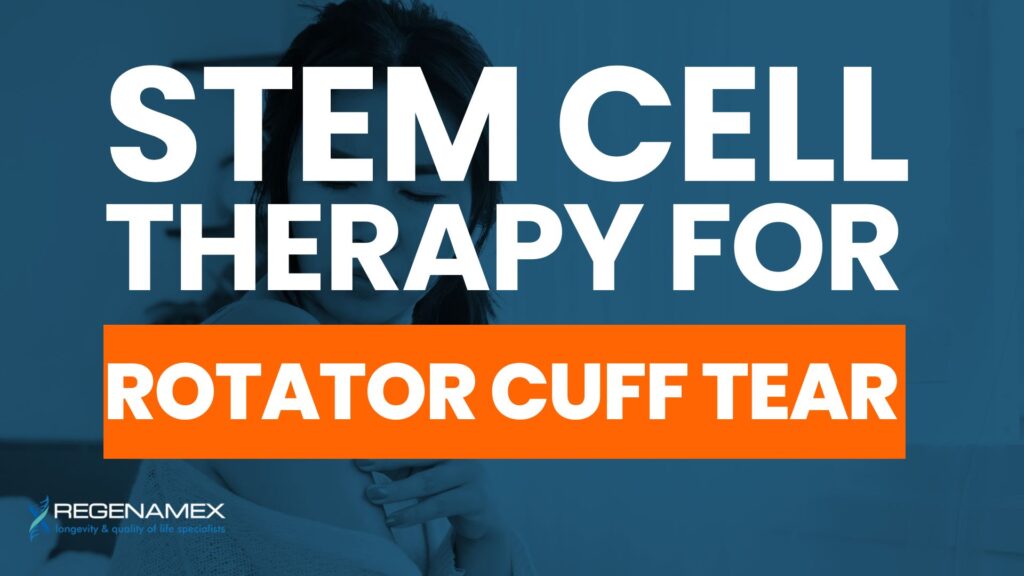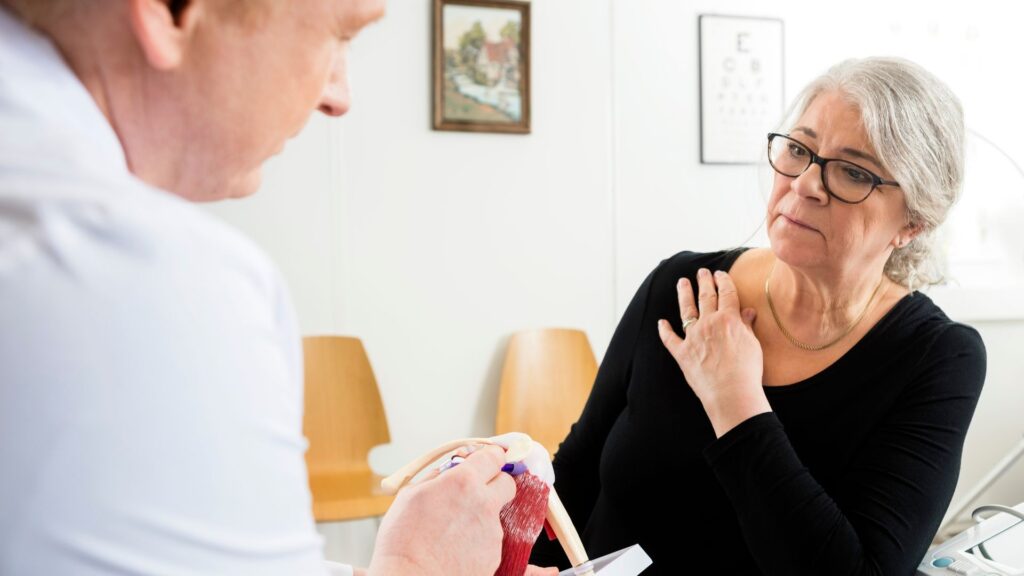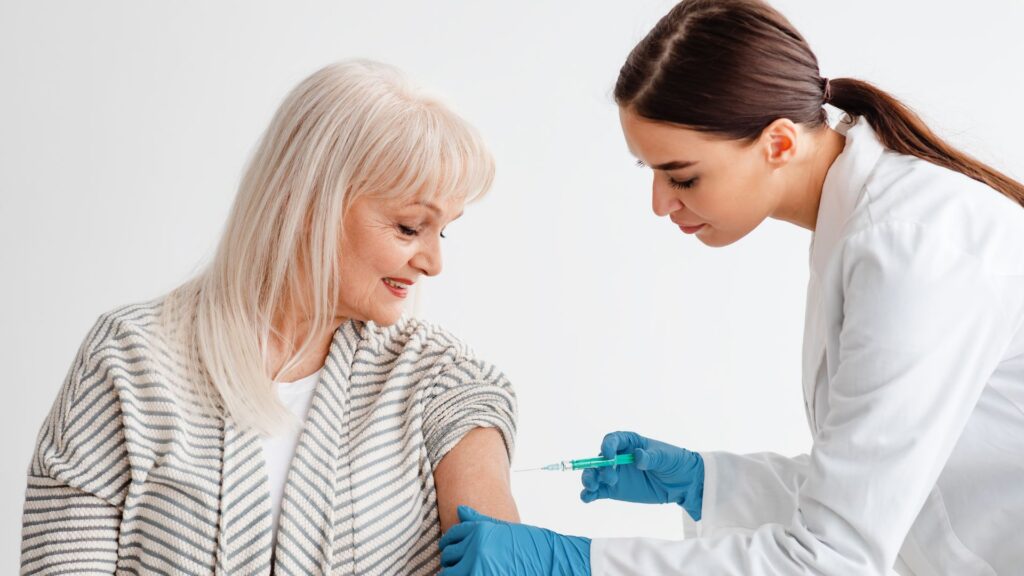
Stem cell therapy for rotator cuff tear is quickly becoming one of the most promising alternatives to surgery for patients struggling with shoulder pain and loss of mobility. Traditionally, rotator cuff injuries have been treated with rest, physical therapy, steroid injections, or in severe cases, surgical repair. However, these approaches often fail to fully restore function or prevent re-injury, leaving many patients frustrated. With advances in regenerative medicine, mesenchymal stem cell (MSC) therapy now offers a minimally invasive solution that targets the root cause of damage by promoting tissue repair and reducing inflammation.
At Regenamex, a licensed regenerative medicine clinic in Mexico, patients from around the world have access to advanced rotator cuff stem cell treatment. Using MSCs derived exclusively from ethically donated placental tissue and Wharton’s jelly, Regenamex provides safe, COFEPRIS-regulated therapies that are tailored to each patient’s unique condition. For those looking to avoid the risks, costs, and long recovery times of surgery, stem cell injections for shoulder pain represent a cutting-edge option that restores movement and enhances quality of life.
Understanding Rotator Cuff Injuries

The rotator cuff plays a vital role in shoulder stability and movement, consisting of four interconnected muscles and tendons that keep the joint secure while allowing a wide range of motion. Tears in this area are unfortunately common, particularly among athletes, manual laborers, and individuals over 40 whose tendons naturally weaken with age. A rotator cuff tear may result from repetitive stress, poor posture, or sudden trauma like a fall. Common symptoms include persistent pain, especially at night, difficulty lifting the arm overhead, and weakness when rotating or extending the shoulder. Over time, untreated injuries can worsen, leading to more severe loss of function and a reduced ability to perform everyday activities.
Conventional approaches often focus on reducing symptoms rather than addressing the underlying tendon damage. Physical therapy, anti-inflammatory medications, and cortisone injections may offer temporary relief, but they do not repair torn tissues. Surgery, often recommended for severe tears, comes with challenges: long recovery times, the possibility of stiffness or scar tissue, and even re-tearing of the repaired tendon. These drawbacks have left many patients searching for alternatives that restore function more naturally. This is where stem cell therapy for rotator cuff tear has emerged as a regenerative option that actively promotes tendon healing rather than simply managing discomfort.
How Rotator Cuff Stem Cell Treatment Works
Rotator cuff stem cell treatment takes advantage of the remarkable healing capacity of mesenchymal stem cells (MSCs). Once injected into the injured tendon, MSCs release signaling molecules known as cytokines and growth factors, which regulate inflammation and trigger the repair process. These cells create an optimal environment for healing by stimulating the body to generate new collagen, the essential protein that provides structure and strength to tendons. Improved blood flow and nutrient delivery to the damaged region further support recovery, giving the body the resources it needs to regenerate tissue.
Unlike cortisone injections, which may temporarily reduce pain but risk weakening tendons over time, stem cell therapy focuses on long-term restoration. By targeting the cellular mechanisms of injury, stem cell injections for shoulder pain address both inflammation and tissue damage. At Regenamex, ultrasound-guided techniques are used to ensure precise placement of MSCs within the torn rotator cuff, maximizing their effectiveness and safety. This level of precision ensures that the regenerative process begins exactly where it is needed, offering patients more reliable outcomes.
Benefits of Stem Cell Injections for Shoulder Pain

For patients looking to avoid invasive surgery, stem cell injections for shoulder pain offer an array of benefits. The non-surgical nature of the treatment means there are no large incisions, no need for general anesthesia, and far fewer complications compared to traditional operations. Most patients return to normal activities within days or weeks, instead of facing months of recovery and rehabilitation. By stimulating tendon repair and reducing inflammation, stem cells provide long-lasting improvements rather than the short-lived relief often associated with cortisone shots or pain medications.
Another major advantage is personalization. At Regenamex, every treatment protocol is tailored to the patient’s condition, ensuring that the type and amount of MSCs used match the severity of the tear. Patients often report improved range of motion, less stiffness, and the ability to resume sports or daily tasks that once caused discomfort. Because MSC therapy encourages the body’s natural repair mechanisms, the results often extend well beyond pain reduction, giving patients a stronger, more resilient shoulder joint. This combination of safety, effectiveness, and faster recovery makes stem cell therapy in Mexico an attractive option for international patients.
Why Choose Stem Cell Therapy in Mexico
Many patients travel abroad for stem cell therapy in Mexico because it offers a balance of safety, accessibility, and affordability that is hard to match elsewhere. In the United States and Canada, stem cell therapy for orthopedic conditions is often classified as experimental, making it difficult to access outside of clinical trials. Even when available, costs are prohibitively high. In contrast, Mexico provides a regulated environment under COFEPRIS that ensures treatments meet international standards while remaining accessible at a fraction of the cost.
Regenamex, with clinics in Puerto Vallarta and Tijuana, has built a reputation as a trusted provider of regenerative care. Patients benefit from ethically sourced Wharton’s jelly and placental MSCs, which are known for their high potency and regenerative potential. Treatments are performed in COFEPRIS-regulated labs with GMP-certified processing, ensuring the highest levels of sterility and safety. Regenamex also integrates complementary therapies such as PRP and exosomes to enhance healing outcomes. With additional patient support through their Fly & Buy program, Regenamex makes accessing advanced shoulder care seamless for international visitors.
What to Expect at Regenamex
Patients undergoing rotator cuff stem cell treatment at Regenamex can expect a carefully structured process that prioritizes safety and individualized care. The journey begins with an initial consultation where medical history, imaging, and injury details are reviewed. Based on this evaluation, specialists create a personalized protocol that specifies the type and dosage of stem cells required. This ensures that each patient receives treatment tailored to their condition rather than a one-size-fits-all approach.
On the day of the procedure, MSCs are processed in GMP-certified labs under COFEPRIS oversight, guaranteeing sterility and consistency. Using advanced ultrasound imaging, physicians deliver the cells directly into the injured tendon with precision. The treatment itself is minimally invasive and typically well-tolerated. Most patients are able to return to daily routines within days, and improvements build gradually over the following weeks. Regenamex also provides ongoing follow-up support to monitor progress and adjust recovery recommendations, ensuring long-term success.
Long-Term Outlook for Rotator Cuff Stem Cell Treatment
The long-term outlook for patients who choose stem cell therapy for rotator cuff tear is highly encouraging. Many individuals report sustained improvements in pain levels, increased strength, and restored range of motion, often eliminating the need for surgery altogether. For athletes or active individuals, this can mean a faster return to sports and physical activity without the lengthy downtime of surgical recovery. Beyond short-term relief, MSC therapy strengthens the tendon and surrounding tissues, lowering the risk of future injury.
While outcomes vary depending on the size of the tear, patient health, and adherence to aftercare, the regenerative potential of stem cells offers a lasting solution. By addressing both inflammation and structural damage, stem cell therapy provides more comprehensive results than traditional methods. Clinical experience and growing research continue to support MSC therapy as a safe and effective treatment for rotator cuff injuries. As regenerative medicine advances, it is likely that stem cells will become a cornerstone in orthopedic care, offering patients a path to recovery that is both sustainable and less invasive.
FAQs: Stem Cell Therapy for Rotator Cuff Tear
Stem cell therapy for rotator cuff tear is a regenerative medical treatment that uses mesenchymal stem cells (MSCs) to target and repair damage within the shoulder’s tendons. Instead of masking pain with medication or limiting inflammation with temporary solutions, MSCs are injected directly into the affected area to stimulate tissue repair, reduce swelling, and restore function. These cells have the unique ability to release bioactive molecules that promote healing at the cellular level.
Rotator cuff stem cell treatment works by leveraging the natural healing properties of mesenchymal stem cells. When MSCs are injected into the injured tendon, they release growth factors and cytokines that calm inflammation, stimulate collagen production, and support the repair of damaged tendon tissue. This process doesn’t just ease symptoms—it addresses the biological causes of the injury by creating an environment where healing can occur more effectively.
Stem cell therapy in Mexico for rotator cuff injuries is considered safe when performed at regulated clinics like Regenamex. Treatments at Regenamex are carried out under the oversight of COFEPRIS, Mexico’s equivalent of the FDA, which ensures strict compliance with sterile processing and Good Manufacturing Practice (GMP) standards. This oversight reduces the risks associated with unregulated providers and ensures that patients receive ethically sourced, high-quality stem cells.
Stem cell injections for shoulder pain are significantly more effective in the long term compared to cortisone shots. Cortisone injections provide temporary relief by reducing inflammation, but they do not repair tendon damage and may even weaken tissues with repeated use. In contrast, stem cell therapy actively supports healing by stimulating new tissue growth and addressing the root cause of pain.
The timeline for results from rotator cuff stem cell treatment varies depending on the extent of the injury and the patient’s overall health. Most patients begin noticing reduced pain and improved mobility within a few weeks of the procedure, as the inflammation begins to subside. Over the next two to three months, as stem cells continue releasing healing signals and promoting tendon repair, the benefits typically become more pronounced.
Stem cell therapy has the potential to delay or even eliminate the need for rotator cuff surgery in many patients. By targeting inflammation and encouraging tendon regeneration, MSC therapy directly addresses the root causes of shoulder pain and dysfunction. This makes it an appealing option for patients who want to avoid the risks and long recovery times associated with surgical intervention.

